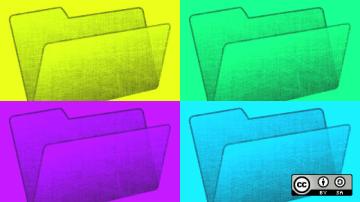When you write a program, your application may need to read from and write to files stored on the user's computer. This is common in situations when you want to load or store configuration options, you need to create log files, or your user wants to save work for later. Every language handles this task a little differently. This article demonstrates how to handle data files with Java.
Installing Java
Regardless of your computer's platform, you can install Java from AdoptOpenJDK. This site offers safe and open source builds of Java. On Linux, you may also find AdoptOpenJDK builds in your software repository.
I recommend using the latest long-term support (LTS) release. The latest non-LTS release is best for developers looking to try the latest Java features, but it likely outpaces what most users have installed—either by default on their system or installed previously for some other Java application. Using the LTS release ensures you're up-to-date with what most users have installed.
Once you have Java installed, open your favorite text editor and get ready to code. You might also want to investigate an integrated development environment for Java. BlueJ is ideal for new programmers, while Eclipse and Netbeans are nice for intermediate and experienced coders.
Reading a file with Java
Java uses the File library to load files.
This example creates a class called Ingest to read data from a file. When you open a file in Java, you create a Scanner object, which scans the file you provide, line by line. In fact, a Scanner is the same concept as a cursor in a text editor, and you can control that "cursor" for reading and writing with Scanner methods like nextLine:
import java.io.File;
import java.util.Scanner;
import java.io.FileNotFoundException;
public class Ingest {
public static void main(String[] args) {
try {
File myFile = new File("example.txt");
Scanner myScanner = new Scanner(myFile);
while (myScanner.hasNextLine()) {
String line = myScanner.nextLine();
System.out.println(line);
}
myScanner.close();
} catch (FileNotFoundException ex) {
ex.printStackTrace();
} //try
} //main
} //classThis code creates the variable myfile under the assumption that a file named example.txt exists. If that file does not exist, Java "throws an exception" (this means it found an error in what you attempted to do and says so), which is "caught" by the very specific FileNotFoundException library. The fact that there's a library specific to this exact error betrays how common this error is.
Next, it creates a Scanner and loads the file into it. I call it myScanner to differentiate it from its generic class template. A while loop sends myScanner over the file, line by line, for as long as there is a next line. That's what the hasNextLine method does: it detects whether there's any data after the "cursor." You can simulate this by opening a file in a text editor: Your cursor starts at the very beginning of the file, and you can use the keyboard to scan through the file with the cursor until you run out of lines.
The while loop creates a variable line and assigns it the data of the current line. Then it prints the contents of line just to provide feedback. A more useful program would probably parse each line to extract whatever important data it contains.
At the end of the process, the myScanner object closes.
Running the code
Save your code as Ingest.java (it's a Java convention to give classes an initial capital letter and name the file to match). If you try to run this simple application, you will probably receive an error because there is no example.txt for the application to load yet:
$ java ./Ingest.java
java.io.FileNotFoundException:
example.txt (No such file or directory)What a perfect opportunity to write a Java application that writes data to a file!
Writing data to a file with Java
Whether you're storing data that your user creates with your application or just metadata about what a user did in an application (for instance, game saves or recent songs played), there are lots of good reasons to store data for later use. In Java, this is achieved through the FileWriter library, this time by opening a file, writing data into it, and then closing the file:
import java.io.FileWriter;
import java.io.IOException;
public class Exgest {
public static void main(String[] args) {
try {
FileWriter myFileWriter = new FileWriter("example.txt", true);
myFileWriter.write("Hello world\n");
myFileWriter.close();
} catch (IOException ex) {
System.out.println(ex);
} // try
} // main
}The logic and flow of this class are similar to reading a file. Instead of a Scanner, it creates a FileWriter object with the name of a file. The true flag at the end of the FileWriter statement tells FileWriter to append text to the end of the file. To overwrite a file's contents, remove the true:
FileWriter myFileWriter = new FileWriter("example.txt", true);Because I'm writing plain text into a file, I added my own newline character (\n) at the end of the data (Hello world) written into the file.
Trying the code
Save this code as Exgest.java, following the Java convention of naming the file to match the class name.
Now that you have the means to create and read data with Java, you can try your new applications, in reverse order:
$ java ./Exgest.java
$ java ./Ingest.java
Hello world
$Because it appends data to the end, you can repeat your application to write data as many times as you want to add more data to your file:
$ java ./Exgest.java
$ java ./Exgest.java
$ java ./Exgest.java
$ java ./Ingest.java
Hello world
Hello world
Hello world
$Java and data
You're don't write raw text into a file very often; in the real world, you probably use an additional library to write a specific format instead. For instance, you might use an XML library to write complex data, an INI or YAML library to write configuration files, or any number of specialized libraries to write binary formats like images or audio.
For full information, refer to the OpenJDK documentation.









Comments are closed.